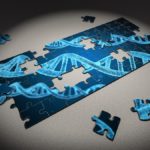
For the assignment this week, we were tasked with reviewing the summaries and videos our colleagues have created on sections chosen from two books: The Cambridge Handbook of Multimedia Learning and Second Handbook of Information Technology in Primary and Secondary Education. I’ll summarize some of the summaries.
The Cambridge Handbook of Multimedia Learning
Reviewing specifically chapter 15: The Guided Discovery Learning Principle in Multimedia Learning, this summary provided a few ideas that were reinforced by later chapters of both books. This overview of multimedia usage for essentially personalized inquiry (by another name) highlighted that students often lack the self-regulation and information management skills to make good use of this learning opportunity. The authors mention the need for guidance and careful planning many times which I find are things that any educator worth their salt already understands – take nothing for granted and assume students are starting at the bottom for any skill until data proves otherwise. I have spent a particularly good chuck of educational time in my classroom working on note taking features, using templates and general organization around information overload – all things mentioned by the authors here.
As in the previous chapter, chapter 21 – The Learner Control Principle in Multimedia Learning, again reinforces things that I have already established through anecdotal evidence in my own classes as well as through my reading of educational books about personalized learning. The authors identify and acknowledge my concerns that many students lack the learning skills to make use of a system designed for self-paced learning. Whether it is a lack of internal motivation, a lack of general time-management skills, an uninformed understanding of credibility in sources, or information management, skills will need to be heavily scaffolded with a gradual release of responsibility likely taking place over may months of work. That being said, I was shocked to read the authors state that little positive empirical evidence exists for”learner control” systems, as so many books, Professional Development sessions and all levels of bureaucracy in my province seem to be advocating for a personalized learning system (or to use the author’s wording, a “learner-controlled, guided-discovery” paradigm). If it is not supported yet by research, why the concerted push?
Second Handbook of Information Technology in Primary and Secondary Education – Section VIII: Flexible, Distance, and Open Learning in the Twenty-First Century
My colleagues provided a great, concise summary of principles I know to be part of “blended” learning – a term, that encompasses flexible, open and distance learning. In summarizing the aspects of the learning process and the flexibility of a system needed for quality distance and open learning, I was reconnected to the book “Blended” by Michael B. Horn and Heather Staker, which I read 3 years ago as part of a collaborative initiative. A lot of the same principles are discussed in the book which gave me a strong foundation to connect to this summary – the graphics included in my colleagues written summary were especially clear. The graphic breakdown of key aspects to implementation to include “workshops” and “understanding” for teachers was also important. Many Information Technology (IT) articles we have read though this program has either explicitly or implicitly discussed the need for teacher knowledge and training as a key component to IT integration at any degree of use, and I don’t think this point can be stated enough.
This idea of complete personalization of learning (“path, pace, place” as noted in Blended) that comes with flexible, distance, and open learning also ties into the section introduction I was tasked with summarizing by Webb & Ifenthaler – Using Information Technology for Assessment: Issues and Opportunities. Within, the authors discuss the future of IT as to create personalized content, assessment, and feedback. While Webb & Ifenthaler do not explicitly tie this future to distance and open learning, it certainly would be a part of the personalization of education envisioned by the authors of Blended.
Section II: Curricular Challenges of the 21st Century
This summary reiterates the previous information by saying again that students 1) don’t have and 2) badly need IT skills to properly appreciate, utilize, and produce. Specifically mentioned by the authors as a “key challenge” to increased IT incorporation, students have very little idea how to test for validity and reliability of information, and while this skill has always been important, it is currently paramount. Other skills like digital citizenship, digital literacy, computational thinking is valuable and must be addressed; but not as critical as the need to be able to evaluate online information given the emergence of “fake news” and “deep fakes.” As disinformation is only getting more ubiquitous with our current political and societal situations, the concept of being able to critically evaluate the sources, sites and content of our daily information should be priority one for all educators.
This brings me to a common theme of this assignment – that the research seems outdated based on my experiences. Working in an IT-forward division, I have been exposed to the realities of IT long enough to have experimented and evaluated over many long pedagogical discussions with colleagues the ramifications of IT integration. Through our collective experiences we have fallen upon the realization that students lack the self-regulation skills for true personalized learning. We have fallen upon the realization that students lack the IT skills necessary to actively and appropriately engage with emerging technologies.
This was and idea that was discussed in our class lectures to great reward. As research and publication takes 2-3 years become available, it IS often outdated and can only really serve as reinforcement and confirmation of the situations teachers will have experienced in the trenches. My professor mentioned that seeing the research back up experience should be the reward of reading it, as not only the delay in the publishing process, but the snails-pace of research compared to IT innovation means that research can rarely be used to find “new” or “innovative” ideas. One advantage of this fact – any reflective and engaged educator will feel smart reading educational research!
“Animation Domination Fox” by FOXAdHd found on Giphy





